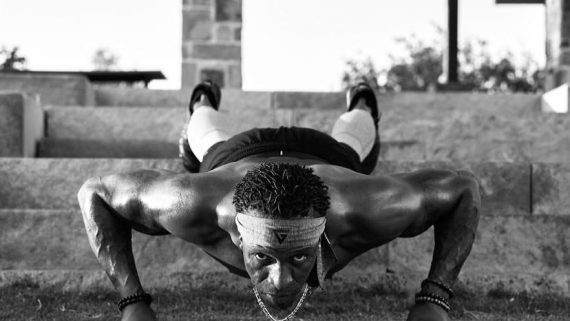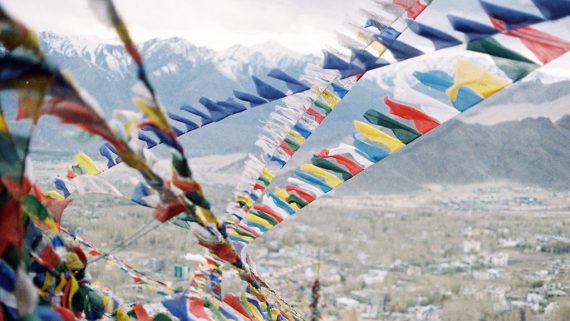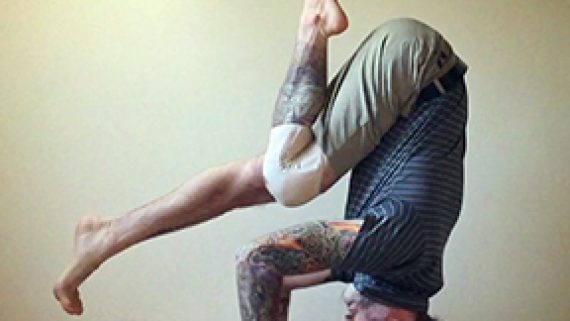A History of Reiki & Its Astonishing Modern Application
A History of Reiki and Its Astonishing Modern Application
By: Tia Marie, Reiki Master at Horizon Hot Yoga & Mary Von Ahnen, Owner, Horizon Hot Yoga
Reiki has been in practice in some cultures for centuries as an effective form of healing and prevention for illness. This therapy has enjoyed more mainstream recognition in recent years. Where did it come from? How does it work? Can it help you? We will answer all these questions in this article and even give you straight talk from Reiki Master Tia Marie, who practices this beautiful craft at Horizon Hot Yoga in Frisco.
First, let’s explain what Reiki is. Rei means “spirit/soul” and ki means “energy/life-force.” They combine as Reiki, which is best defined as spiritually-guided life force energy. It is believed that illnesses arise when there are disturbances in a person’s energy field. Using light touch with the hands or no touch (where the hands are placed to hover just above the client’s body), a Reiki practitioner channels this intuitive, universal energy in a way that improves the flow and balance of ki (also known as qi, chi, life force, prana), harmonizing it with healing throughout the body. Since it is believed that we all originate from the same source of creation, we all have Reiki within us. One of the greatest gifts as a practitioner is the client’s recognition of this healing power within them as their bodies respond to the treatment. They report feeling light, peaceful, blissful, and more deeply connected to their spirit nature.
In order to fully understand the practice, it’s useful to know how it started. The basis of Reiki stems from spiritual disciplines that connect us to alternate levels of reality and ourselves. The word Reiki itself has been a part of the Japanese language for several hundred years as a generic word to describe healing, or topics relating to spirit. It became popularized and referred to as the healing method of Reiki we know today by way of a Japanese man named Makao Usui. From the age of 4, Usui studied at a Buddhist monastery, and by the age of 12, he was renowned for his expertise in Aiki Jutsu and other forms of martial arts. He traveled the world studying medicine, psychology, and religion. In 1914, while studying with the monks at the Tendai Buddhist Temple in Mt. Kurama, he discovered what he believed to be the formula for opening the healing channels, through the same methods used by the Zen monks to quicken their connection to Spirit during meditation. He entered a 21-day training course offered by the temple hoping to achieve the ability to interpret the full formula. His completion of the course succeeded in offering him the gift of being able to give healing to others without depleting his own energy. After 6 years of working with the impoverished people of Kyoto, in 1922 he founded a healing society in Tokyo called Usui Reiki Ryoho Gakkai, which translates to Usui Reiki Healing Society, where he gave treatments and taught classes. When he died in 1930, there were 16 to 18 Reiki masters who had studied under his guidance to carry out his legacy of healing.
One such master of Usui was Chujiro Hayashi, a retired naval officer who opened his own healing clinic in Tokyo and trained teams of Reiki practitioners of both genders, including 16 Reiki masters in his lifetime. In 1935, a woman named Hawayo Takata came to Hayashi’s clinic for healing. Born in Hawaii in 1900, Takata was a widow with 2 small children and myriad health problems, including a life-threatening disease of the gallbladder requiring surgery; however, a respiratory condition prevented the use of anesthesia. She was told that without surgery she would not live, but surgery also posed a high risk of death. Takata left Hawaii to visit Tokyo where her parents had returned to live, and there she entered a hospital for surgery. Her health problems had increased as she now faced appendicitis, a tumor, and gallstones. A clear voice came to her in the night telling her that surgery was not necessary. She heard this same voice as she lay on the operating table. So, just before being anesthetized, she asked the surgeon if there were another way for her to heal. The surgeon told her about Hayashi’s healing clinic and said that his own sister had been healed there. The surgeon’s sister took her to Hayashi that same day. Takata lived at the clinic and was completely healed in 4 months. Initially, when Takata sought a path of training in Reiki herself, she was refused by Hayashi for being a foreigner, and he did not want the practice to leave Japan. He eventually relented, and Takata received her Reiki I & II trainings before returning to Hawaii in 1937. Hayashi visited Takata in Hawaii in 1938, where they did a lecture tour together, and it was then that she received her Reiki III training (Reiki master teacher). Takata is responsible for the flourishing of Reiki teachings in the west. She trained hundreds of practitioners in the US, Canada, and Europe, including 22 Reiki master initiates during the last 10 years of her life. Though Takata reshaped the origins of Reiki for the western public, in order to protect its ancient roots from the narrow-minded perspectives of the times, the foundation and core properties were deliberately preserved and still remain today.
The benefits of Reiki include, but are not limited to: providing a calming or relaxed state of being, reduction of stress and anxiety, improving or amplifying spiritual awareness, effective therapeutic treatment for emotional wounds and grief, pain relief due to disease or injury, promoting harmony and balance between mind, body, and spirit, dissolving energy blocks, assisting the body in detoxification and supporting immune function, aids in better sleep, and it can be used as an accompaniment to allopathic medicine to help treat illnesses and expedite the body’s natural healing process after surgery, possibly reducing recovery times.
Now that you know what Reiki is, and how it evolved, let’s talk to a Reiki Master, Tia Marie.

Tell us a little about yourself. How did you come to practice Reiki?
I started walking a spiritual path in 2008 when I began practicing yoga. In 2014, my journey became more deliberate as I experienced a profound awakening that left me desiring a deeper connection to myself and God. As my intuitive gifts opened, I started asking for guidance during my meditations on how I could best serve others with these gifts. I was guided to pursue Reiki. Since receiving my training, Reiki has transformed the landscape of my life in the best way possible. This past summer, I quit my medical sales job of 7 years to pursue a path of presence and service full-time through Reiki and teaching yoga. Sharing this light, clarity, and unconditional love with others is my greatest honor.
What kind of training does one undergo to in order to practice Reiki?
Training to practice Reiki is divided into 3 degrees, which also represent the levels of attunement to the vibrational frequency of Reiki. The first degree is called Reiki I, or “Shoden” in Japanese, and this is where one receives the first attunement from a master teacher. The teachings at this level focus on its history, how to perform self-Reiki, and how to perform Reiki on others. Once attuned at this level, one is attuned to Reiki for life.
Reiki II is the second degree, or “Okuden”, where one learns how to work with the first three Reiki symbols and how to send Reiki energy from a distance. One receives an additional attunement, and upon completion of this level you are considered a Reiki practitioner.
The 3rd degree of Reiki is the master teacher, or “Shinpiden.” (The word “master” in this case simply means teacher.) At this level, one learns about the master symbol and how to give attunements to others. The practitioner also receives the master attunement. Many practitioners feel complete in their training after the 2nd degree and never pursue the 3rd degree. The main difference between these two levels is that a master teacher has the ability to attune others, which is beneficial if you plan to become a Reiki teacher and hold your own classes certifying others. However, if you only plan to perform Reiki on clients, Reiki II is wholly sufficient.
From my own experience with Reiki, there is a need for the qualities of an empath. This seems like something you are born with, rather than what you train to be. Is this true?
I can certainly agree on a personal level, though it is not a required trait. I was born an empath, so I’ve always been deeply drawn to helping and nurturing others. Empaths are marked most notably by a unique ability to feel other people’s feelings as if they were their own. In my Reiki practice, I will often be guided to a specific area of a client’s body by first experiencing a sensation of heat, mild cramping, or pulsing in my own body in the area that I’m being guided to work on in my client. Other times, if I come across an area on my client’s body that is harboring heavy, unresolved emotional wounding, I may feel nauseous or experience an outpouring of tears (which happens frequently when working on the heart chakra). Conversely, carrying these empathic traits can be detrimental to a Reiki practitioner who has not developed the skill set of establishing energetic boundaries and discerning one’s own feelings from those of their clients, and as such they risk taking on their client’s illnesses as their own.
Also, interestingly, receiving a healing through a Reiki session can inspire an activation of empathy within a person. This experience of awakening empathy can be so profound that the person goes on to train in Reiki to help others. A prime example is Mrs. Hawayo Takata, who is responsible for bringing Reiki to the west in 1937 after experiencing a total body healing from life-threatening illnesses through Reiki herself.
In short, you don’t have to be born an empath to be wonderful Reiki practitioner.
What does a Reiki session “feel like” to the person receiving it?
As Reiki energy flows from a practitioner’s hands into the client’s body, the client may feel this sensation in different ways. Some may feel tingling, warmth or heat, coolness, surging of energy, prickly feeling, pulsing, or throbbing, while others may feel nothing at all. My clients most often report feeling waves of heat in particular areas that sometimes recur in the days following a session. Another (and my favorite) is when a client reports feeling an extra set of hands. This could be attributed to the yin (cold) and yang (hot) flow of life force energy felt subtly shifting within the bodily tissue—or the spirits guiding the energy are facilitating extra healing. (Side note: as practitioners, we often feel the “etheric hand” guiding our own. Our hands may feel as if they are sinking into a client’s body, or it may feel at times as if our hands are “stuck,” as if unable to remove them from an area of the body. This is a sign that one is being assisted by spirit and can surrender to their guiding grace.) No matter what sensations the client feels, when being administered by the experienced practitioner, Reiki is flowing exactly where it is needed.
Does Reiki always work? Are there some people who can receive Reiki, and others on whom it has no impact?
Reiki will promote healing within anyone open to receiving it. The exception to Reiki’s effectiveness is a person possessing an unconscious block to the healing of a condition, because the illness is serving them in some way. An example of this would be a mother suffering from arthritis in her hands and unconsciously blocking healing, since her illness inspires her adult children to visit her more often, helping with household duties and therefore spending time with her.
Are there long-term benefits? Or is it just a relaxing session?
First and foremost, it’s absolutely a relaxing session! The importance of relaxation is paramount in this fast-paced society where being stretched too thin is merely seen as a sign of one’s success. The western world in particular spends an inordinate amount of time in a state of stress, functioning from the sympathetic nervous system, which is responsible for the fight or flight response. Idling in this toxic state leads to disease and illness. Giving your body an opportunity to relax fully and deeply allows the parasympathetic nervous system to switch on and activate the body’s natural ability to repair and heal itself, along with allowing the mind to power down and drift into a hypnagogic state (or “yogic sleep”). This state of deep relaxation is a prime environment for Reiki’s powerful healing potential.
As for long-term benefits, if one receives Reiki on a regular basis, it will restore the general condition of the body and open up its energy channels, allowing the body to properly and naturally manage stress and toxins, and to process emotions in a healthy way. Earlier in the article, we discussed the striking example of Mrs. Takata, who avoided dangerous surgery and was cured through Reiki.
Are there different kinds of Reiki, like there are different kinds of massage?
Since Mrs. Takata began teaching Reiki in the west, many different kinds of Reiki have been developed, with more subgroups and branches being channeled everyday. These subgroups are all legitimate as long as they honor and preserve the purity and intentions of the Reiki energy channeled by Dr. Usui, and his followers have identified four unique qualities that appropriately define his technique. Any style of Reiki must possess these four qualities to be considered authentic:
- The ability to do Reiki comes from receiving an attunement, rather than developing the ability over time through the use of meditation or other exercises.
- All Reiki techniques are part of a traceable lineage. This means that the technique has been passed on from teacher to student through an attunement process, starting with the one who first channeled the technique.
- Reiki does not require that one guide the energy with the mind, as it is guided by the higher power and knows where to go and how to act all on its own.
- Because of this, Reiki can do no harm.
How do you see yoga and Reiki coming together?
Yoga and Reiki are both deeply rooted and anchored by a connection to the Divine. Though most are initially attracted to these practices for the benefits they offer to the physical body, they guide an individual to explore and establish access to themselves beyond the external, and instead seek to develop an awareness of one’s more subtle energy body and nature (the inner self). The way yoga and Reiki have come together in my own life has literally changed me from the outside in. Journeying down these two parallel paths has led me to know peace, freedom, fulfillment, and authentic purpose. Subtle awareness leads to the greatest perspective.
Conclusion:
Reiki is wonderful that this ancient practice of healing has made its way west and has become part of mainstream, alternative healing. To learn more about Reiki or to book a session with Tia Marie, visit www.horizonhotyoga.com.









